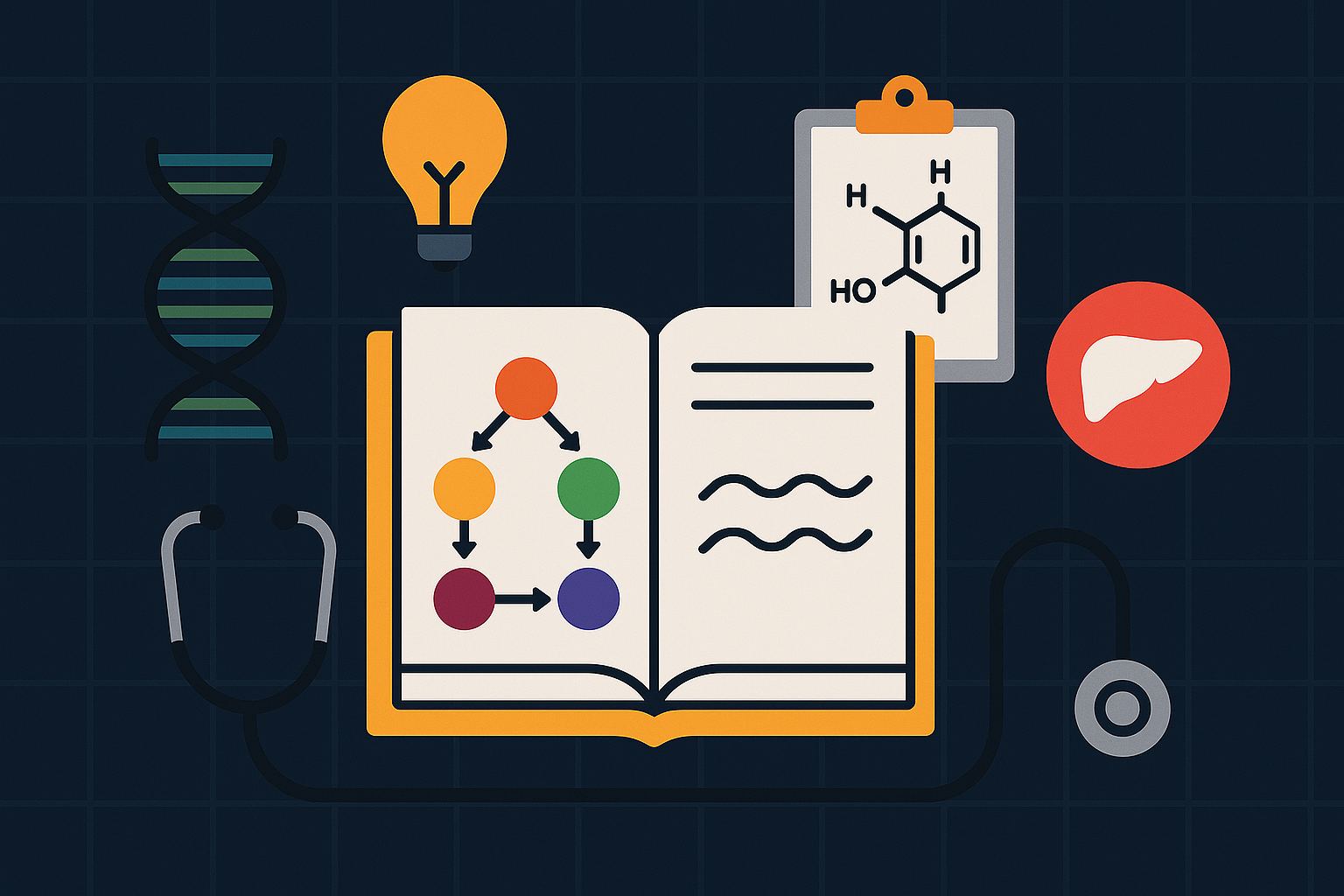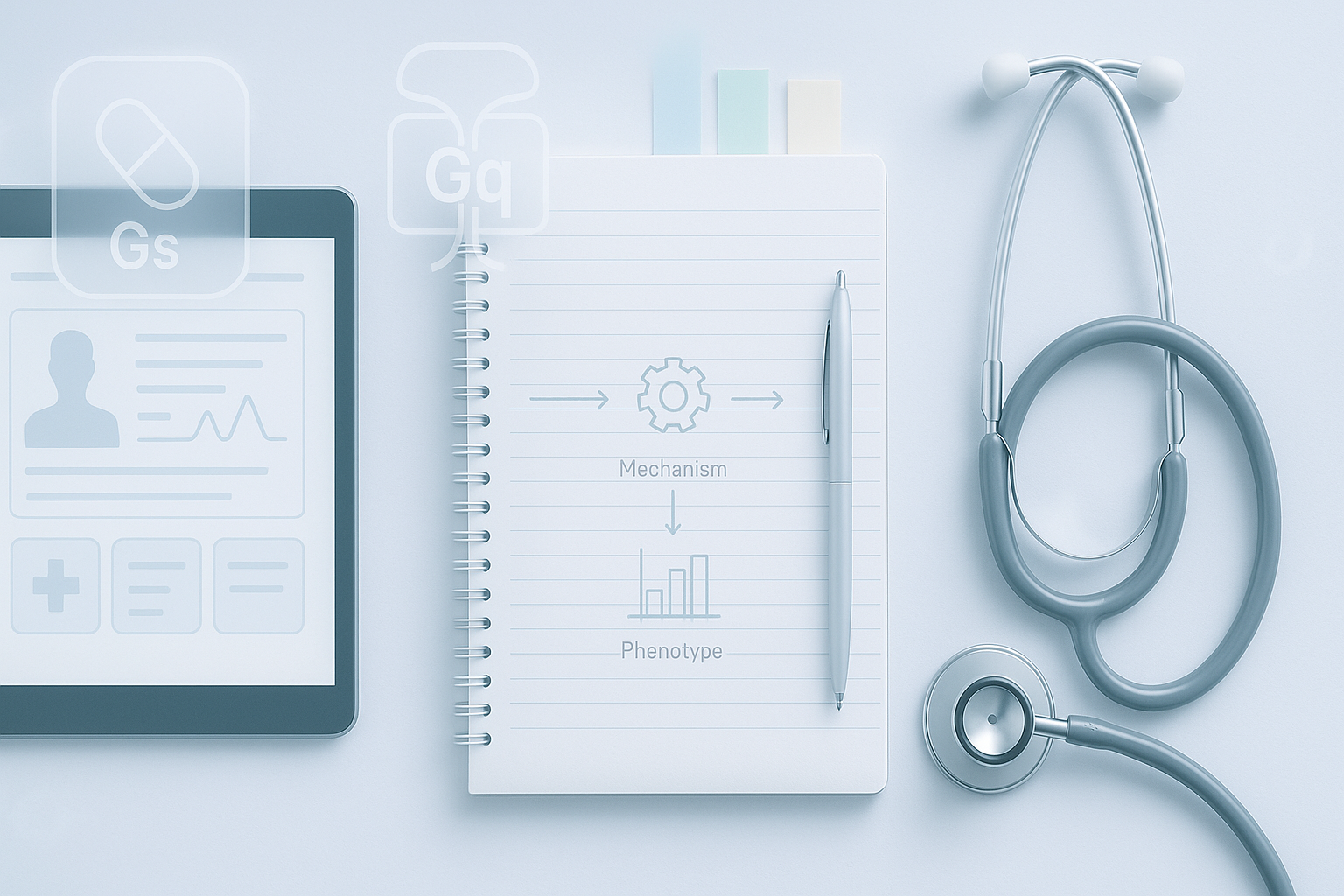High-Yield Focus: Learn to decode biochemistry questions on Step 1 by recognizing pathway clues, trigger words, and metabolic “signatures” that repeatedly appear in clinical vignettes.
Why Step 1 Loves Biochemistry Vignettes
Step 1 doesn’t test you on memorized pathways—it tests whether you can identify which pathway a patient’s presentation is pointing toward. Biochemistry questions rarely say “Which enzyme is deficient?” without embedding it in a metabolic or physiologic context. Understanding how the exam writers construct clues—substrate buildup, organ system affected, or type of inheritance—turns intimidating content into predictable logic.
The majority of Step 1 biochemistry stems fall into three recurring frames:
- Energy failure: infant with hypoglycemia or lactic acidosis → glycolysis or oxidative phosphorylation disorder.
- Toxic accumulation: neurologic decline or unusual odor → amino acid or organic acid defect.
- Synthetic failure: absent hormone, neurotransmitter, or pigment → cofactor deficiency or enzyme block.
By categorizing questions by these “metabolic storylines,” you save time decoding and improve retention. MDSteps’ Adaptive QBank reinforces this by tagging each biochemistry question with its metabolic category, allowing you to study by theme rather than random recall.
Step 1 Logic: From Symptom to Pathway
Every question gives you a symptom–biochemistry link. The challenge is translating language like “vomiting after fructose ingestion” into the relevant pathway—here, fructose metabolism (aldolase B). The key is mapping clinical descriptors to metabolic types:
| Symptom Cluster | Likely Pathway | Recall Trigger |
|---|
| Infant hypoglycemia, hepatomegaly, doll-like face | Glycogen storage disease (G6Pase) | “Fasting → seizure risk” |
| Musty odor, intellectual delay | Phenylalanine metabolism (Phenylalanine hydroxylase) | “Aromatic amino acid buildup” |
| Muscle pain after exercise | Glycolysis defect (McArdle disease) | “No rise in lactate after exercise” |
| Megaloblastic anemia + neuro findings | B12 deficiency (Methylmalonyl-CoA mutase) | “Methylmalonic acid ↑” |
When you train to recognize these clusters, biochemistry becomes a pattern-recognition game. MDSteps’ AI tutor uses this same structure in its explanation overlays—highlighting which phrase was the recall trigger—so that you practice “exam-mode decoding” automatically.
Decoding Triggers: Words That Reveal the Pathway
Vignette writers rely on a limited vocabulary. Knowing the “buzzwords” lets you instantly jump to the right pathway before reading the options. A few universal triggers:
- Sweet smell / urine odor → maple syrup urine disease or isovaleric acidemia.
- Photosensitivity → porphyrin or pyrimidine metabolism disorders.
- Rickets or neuropathy → vitamin-dependent cofactor reactions.
- Hepatomegaly + hypoketotic hypoglycemia → fatty acid oxidation defect.
- Blue/black urine or sclera → alkaptonuria (homogentisate oxidase deficiency).
Make flashcards of these triggers—but organize by symptom type, not by enzyme. MDSteps automatically generates flashcards from your QBank misses and exports them to Anki, already labeled with these trigger phrases.
Master your USMLE prep with MDSteps.
Practice exactly how you’ll be tested—adaptive QBank, live CCS, and clarity from your data.
What you get
- Adaptive QBank with rationales that teach
- CCS cases with live vitals & scoring
- Progress dashboard with readiness signals
No Subscriptions • No Credit Card to Start
Create your account
Integration: Linking Pathways Across Systems
Many Step 1 questions integrate biochemistry with physiology, pathology, and pharmacology. A cofactor deficiency can mimic a pharmacologic inhibitor, or a metabolic block may manifest as organ-specific pathology. For example:
- Niacin deficiency (B₃) mirrors isoniazid toxicity because both reduce NAD⁺ synthesis.
- Fructose intolerance causes hypoglycemia by trapping phosphate and halting ATP generation—tying hepatic energy failure to enzymatic blockade.
- Ornithine transcarbamylase deficiency presents with respiratory alkalosis and elevated orotic acid, linking metabolism to acid–base physiology.
Use integration charts to visualize these links. MDSteps’ analytics dashboard automatically maps missed items across organ systems, helping you see whether a weakness in biochemistry is affecting related physiology performance.
High-Yield Pathways Worth Mastering
Not all pathways deserve equal attention. The NBME repeatedly tests certain ones because they are easy to integrate into vignettes. Prioritize these five families:
| Pathway | Core Concept | Exam Hook |
|---|
| Glycolysis / Gluconeogenesis | Energy balance, fasting state | “Hypoglycemia after overnight fast” |
| Urea Cycle | Ammonia detoxification | “Vomiting + lethargy after protein meal” |
| Amino Acid Metabolism | Neurotransmitter synthesis | “Movement disorder + musty odor” |
| Fatty Acid Oxidation | Ketoacid formation | “Hypoketotic hypoglycemia” |
| Heme Synthesis | Porphyrin pathway | “Abdominal pain + photosensitivity” |
Each of these overlaps with pharmacology or clinical disease, giving them triple weight. MDSteps’ adaptive study plan can schedule these pathways for spaced review sessions proportional to their NBME frequency.
Rapid-Fire Recall Frameworks
Memory aids work best when they’re built around biochemical logic, not arbitrary mnemonics. A strong recall framework links substrate, enzyme, and outcome. Example: “Substrate → Product → Symptom.”
| Substrate | Enzyme | Defect Result | Clinical Cue |
|---|
| Phenylalanine | Phenylalanine hydroxylase | Phenylketonuria | Musty odor, light skin |
| Homocysteine | Cystathionine synthase | Homocystinuria | Lens subluxation, thrombosis |
| Galactose | Galactose-1-P uridyltransferase | Galactosemia | Cataracts, liver failure |
| Tyrosine | Tyrosinase | Albinism | Absent pigment, skin cancer risk |
Building your own tables during review consolidates memory. MDSteps’ auto-notebook compiles similar frameworks from your study history, creating a personalized “biochem map” without extra work.
Exam-Day Strategy: Decode Before You Read Options
On test day, time pressure rewards proactive decoding. Before glancing at the answer choices, summarize the vignette in one sentence: “Infant + hypoglycemia + hepatomegaly → glycogen storage disease.” This prevents distraction by plausible but irrelevant answer stems.
Tips for speed decoding:
- Underline trigger words (odor, fasting, photosensitivity, hypoketotic).
- Ignore lab noise—focus on direction of change (↑ or ↓), not exact value.
- Predict pathway first, then match to the enzyme.
- Flag “metabolic signatures”: acidosis, ammonia, reducing substances in urine.
MDSteps’ timed “Rapid Recall Mode” in its QBank simulates this strategy by showing stems for 20 seconds before revealing choices, forcing cognitive pre-activation—the same skill high scorers use.
Rapid-Review Checklist: Biochemistry Vignette Decoder
- Classify every biochem question as energy, toxic, or synthetic failure.
- Identify the organ primarily affected—liver, muscle, or CNS narrows the pathway field instantly.
- Memorize 10–15 “trigger words” that map directly to pathways.
- Drill high-frequency pathways weekly: glycolysis, urea, amino acids, FA oxidation, heme synthesis.
- Cross-link deficiencies to their cofactors and drugs that mimic them.
- Use MDSteps analytics to visualize cross-discipline overlap—biochem weakness often explains physiology misses.
- Simulate exam timing with Rapid Recall Mode; predict before peeking.
- End each block with flashcard export of any missed triggers for spaced recall.
Mastering biochemistry on Step 1 is not about memorizing hundreds of reactions—it’s about recognizing metabolic language. With structured pattern training, automated analytics, and thematic recall practice, MDSteps transforms biochemistry from rote content into a predictable decoding exercise.
References & Further Reading:
1. National Board of Medical Examiners® (NBME) Step 1 Content Outline.
2. Costanzo LS. Physiology, 7th ed. Elsevier; 2021.
3. Rodwell VW et al. Harper’s Illustrated Biochemistry, 32nd ed. McGraw-Hill; 2022.
4. Brown G. “Patterns in Metabolic Disorders on Step 1.” MedEdPortal. 2023.
100+ new students last month.






